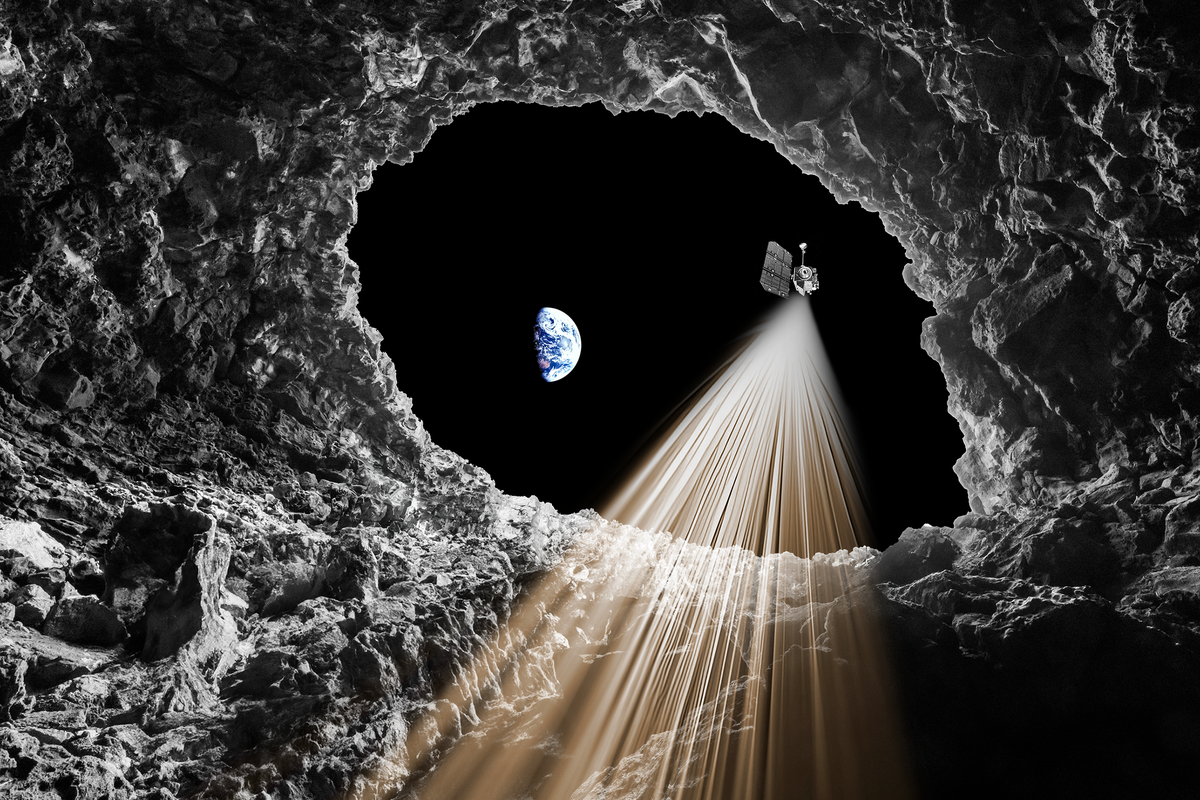
Support truly
independent journalism
Scientists have found a tunnel under the surface of the Moon.
The study could help space agencies as they plan to go back to the Moon – and perhaps even stay there for significant amounts of time. The caves could be an important way of protecting those astronauts from the extreme environment on the lunar surface.
The breakthrough discovery seems to confirm decades of speculation about caves that might run under the lunar surface.
Now scientists have found what appears to be an underground cave. It marks the first time that researchers have confirmed an accessible cave – likely a tube left by flowing lava – under the Moon’s surface.
The data was actually gathered in 2010, as part of Nasa’s ongoing Lunar Reconnaissance Orbiter or LRO mission. But years on, researchers re-anlaysed that data with new signal processing techniques – and found that suggested that there is an “underground cave conduit”.
“This research demonstrates both how radar data of the Moon can be used in novel ways to address fundamental questions for science and exploration and how crucial it is to continue collecting remotely sensed data of the Moon,” said Wes Patterson, fromthe Johns Hopkins Applied Physics Laboratory. “This includes the current LRO mission and, hopefully, future orbiter missions.”
The caves might serve as an important shelter for astronauts who are spending significant time on the lunar surface.
Surface temperatures on the Moon can reach 127 degrees Celsius when it is hit by the Sun, and can drop to -173 degrees away from the Sun. Cosmic and solar radiation can be 150 times more powerful than it is on Earth, and anyone on the surface is in constant danger of being hit by a meteorite.
As such, space agencies hope that the caves – and potential networks of them – could be used to build safe habitats for lunar explorers.
The researchers suggest that the newly discovered cave could be a promising spot for a future lunar base. The new techniques could also prove useful in finding other caves, they say.
Astronomers have already found more than 200 pits on the Moon’s surface, some of which appear to have been formed when a lava tube collapsed underneath.
The work is published in a new paper, ‘Radar Evidence of an Accessible Cave Conduit below the Mare Tranquillitatis Pit’, in the journal Nature Astronomy.







